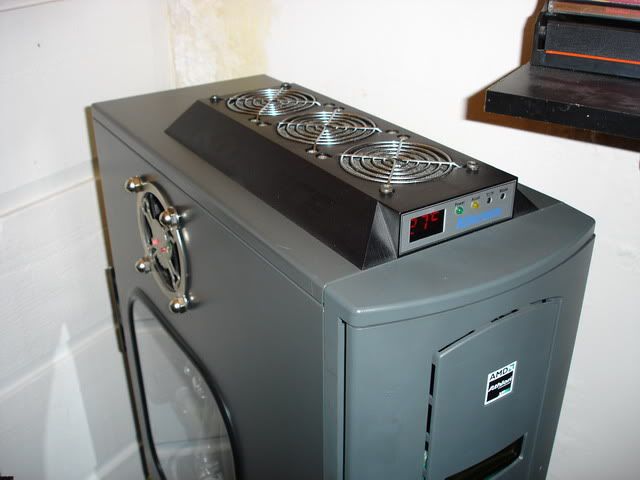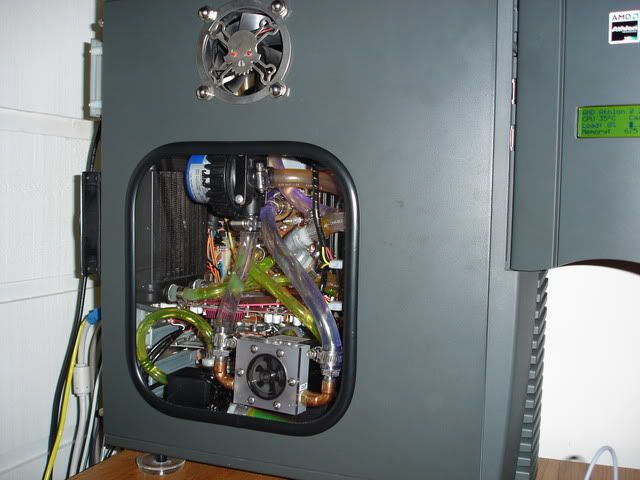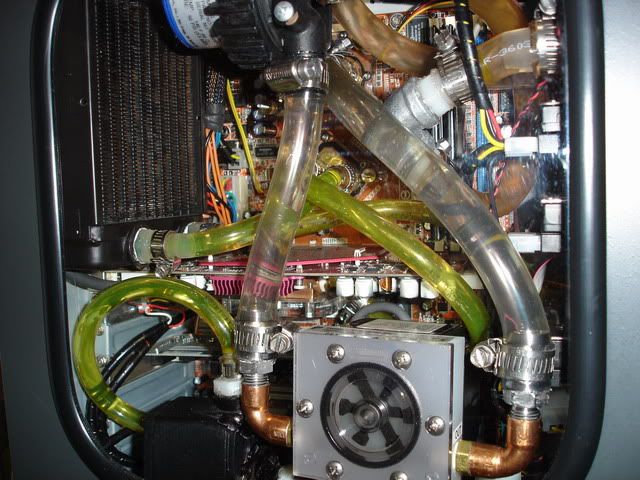I have been giving some thought to doing a Koolance - DIY hybrid design. I'm not to pleased with a $350 EXOS II design, but I want to use a modified 3/8 system. Seems like a lot of bucks for a pump, radiator, and reservoir. The only thing it has going for it is the auto shutdown feature for temps getting elevated.
I suppose I could build some type of circuit (like a pool alarm) that could monitor the coolant level and turn off the computer if coolant goes below a certain level. It wouldn't have to be too complex as I could use a switch that would go in the mb/power supply on-off headers. I assume this has been done before so how about some info or links to appropriate circuitry?
I wish to use my Koolance coolers on my CPU (CPU-300-V10) and the GPU-180 coolers for my NF4 and VGA coolers. My system so far is plumbed for a 3/8" CPU block and the 3/8" output splits into two (2) 1/4" lines. One line goes through the NF4 cooler and the other goes through both VGA coolers. The two (2) 1/4" lines then rejoin into a single 3/8" line for return to the pump, radiator, and reservoir.
So I have been considering an Eheim 1046 pump and a Typhoon reservoir for the internal components. I'm stuck on what might be an appropriate radiator and where to put it? Need some suggestions here.
You can see some pics and more info here: http://home.earthlink.net/~topnurse/index.html
I suppose I could build some type of circuit (like a pool alarm) that could monitor the coolant level and turn off the computer if coolant goes below a certain level. It wouldn't have to be too complex as I could use a switch that would go in the mb/power supply on-off headers. I assume this has been done before so how about some info or links to appropriate circuitry?
I wish to use my Koolance coolers on my CPU (CPU-300-V10) and the GPU-180 coolers for my NF4 and VGA coolers. My system so far is plumbed for a 3/8" CPU block and the 3/8" output splits into two (2) 1/4" lines. One line goes through the NF4 cooler and the other goes through both VGA coolers. The two (2) 1/4" lines then rejoin into a single 3/8" line for return to the pump, radiator, and reservoir.
So I have been considering an Eheim 1046 pump and a Typhoon reservoir for the internal components. I'm stuck on what might be an appropriate radiator and where to put it? Need some suggestions here.
You can see some pics and more info here: http://home.earthlink.net/~topnurse/index.html
![[H]ard|Forum](/styles/hardforum/xenforo/logo_dark.png)



